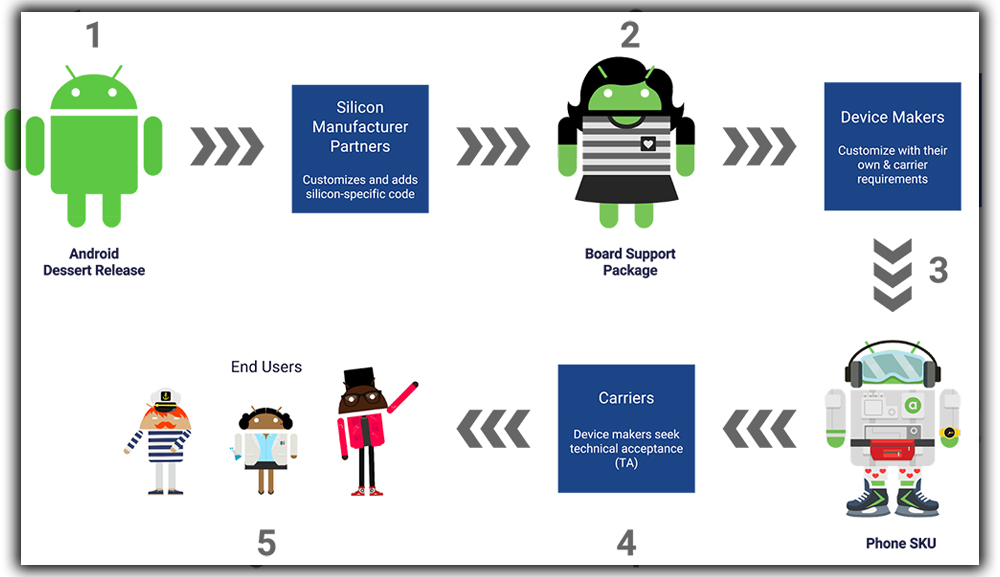Treble Yell

As described, the current process is enormously time-consuming. Forcing phone makers to update their own implementation and the Android OS framework. There are five steps to follow each time there is a new release of Android:
- The Android team publishes the open-source code for the latest release to the world.
- Silicon manufacturers, the companies that make the chips that power Android devices, modify the new release for their specific hardware.
- Silicon manufacturers pass the modified new release to device makers, the companies that design and manufacture Android devices. Device makers adjust the new release again as needed for their devices.
- Device makers work with carriers to test and certify the new release.
- Device makers and carriers make the new release available to users.
The Implementaions
The new system is boiling those steps down to just one. The core concept involves separating the vendor implementation. The device-specific software written mainly by the silicon manufacturers, from the Android OS Framework. Starting with new devices that ship with Android OS will introduce. A new vendor interface between Android and the unique device. The implementations will provide access to the hardware-specific parts of the Android OS. That means device makers can push out new Android releases without additional work from the silicon manufacturers.
Android is basing the system on its Compatibility Test Suite. This system allows developers to push a single app to hundreds of different phones and tablets. As described, Project Treble aims to do what CTS did for apps for the Android OS framework.
In addition to the changes. It is working with its partners to move its code changes into the standard Android Open Source Project codebase. As described, Sony Qualcomm has already contributed dozens of features and hundreds of bug fixes to Android OS. With each new Android release, they won’t have to redo their work.
Android planned to publish the complete documentation for Project Treble on source.android.com. With the launch of the OS in the summer of 2017. And we were expecting to hear much more about it at the I/O conference in 2017. and there was a lot of hype about Android OS.














